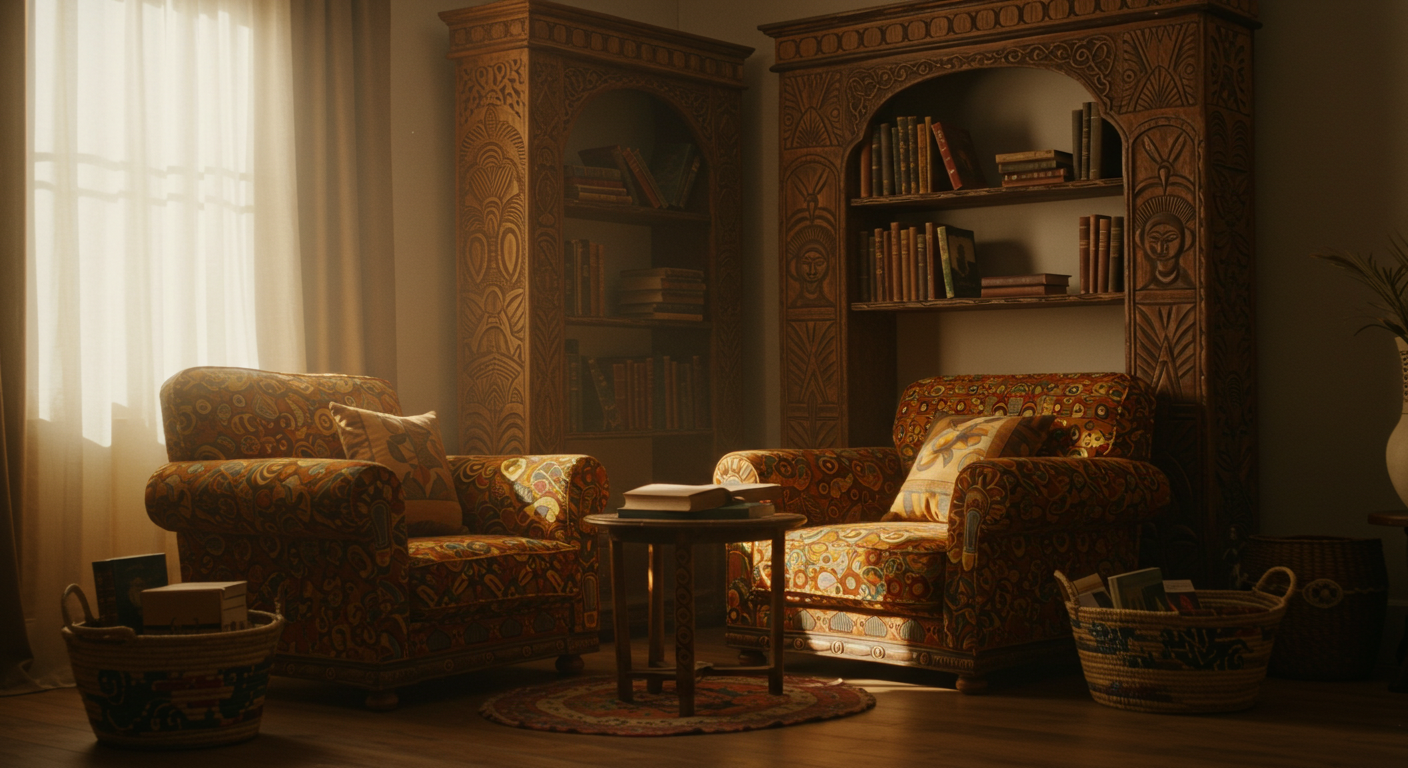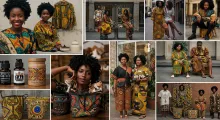A reading nook is a personal sanctuary—an intimate corner of the home that offers solace, inspiration, and escape. When designed with African aesthetics, this space becomes not only cozy but culturally rich, echoing stories, traditions, and craftsmanship from across the continent. Here's an in-depth guide to building a reading nook that celebrates African heritage while ensuring maximum comfort and beauty.
Step 1: Choose the Perfect Location Select a corner in your home that receives natural light, preferably near a window. This could be a bay window, an underused hallway corner, or even a closet you repurpose. Natural lighting is essential not only for reading but also to highlight the intricate patterns and textures typical of African design.
If natural light isn’t available, opt for warm, ambient lighting. African-inspired lanterns, woven rattan lampshades, or hand-carved wooden sconces can cast a beautiful glow and enhance the cultural mood.
Step 2: Seating that Embodies Comfort and Culture Your seating should be both inviting and reflective of African craftsmanship. Consider a low-slung lounge chair upholstered in Kente or Ankara fabric, a cushioned wooden bench, or even a daybed with mudcloth or indigo Adire covers.
Accent your seating with throw pillows made of kuba cloth or batik. These textiles not only offer physical comfort but infuse the space with visual richness and storytelling.
Step 3: Layer with Meaningful Textiles African aesthetics thrive in layers—think texture, color, and symbolism. Use handwoven rugs, such as those made by the Berber people of North Africa or raffia mats from Central Africa. Layer fabrics over seating, hang cloth as wall tapestries, or use traditional shawls as table covers for side tables.
These layers evoke warmth and depth while serving as reminders of traditional weaving, dyeing, and embroidery techniques passed down through generations.
Step 4: Decorate with Intention Decorate your nook with cultural elements that tell a story. Wall shelves can hold miniature sculptures like Shona stone carvings or bronze Benin heads. Include framed African proverbs written in indigenous scripts, vintage photos of marketplaces or dancers, or even symbolic motifs from the Ndebele or Ashanti people.
Add a small table made from reclaimed wood to hold your books, a cup of tea, or traditional snacks like chinchin or dried mango.
Step 5: Bring Nature Inside African interior aesthetics embrace nature. Incorporate potted plants such as snake plants, aloe vera, or peace lilies—plants common in African households. Use clay pots, calabashes, or woven baskets as planters to reinforce the connection to nature and traditional life.
If space allows, hang a lightweight wooden wind chime or cowrie shell mobile near a window to create soft, meditative soundscapes.
Step 6: Immerse the Senses Enhance the multisensory experience of your reading nook with scent and sound. Burn traditional African incense like frankincense, myrrh, or sandalwood. You can also use essential oil diffusers with lemongrass or shea oil to evoke calm and clarity.
Background music can also elevate your reading time. Curate a playlist featuring African harp, mbira, or kora music—soothing, instrumental sounds that harmonize with the quiet of your space.
Step 7: Curate Your Literary Collection Fill your nook with books by African authors, poets, and thinkers. Include works by Chinua Achebe, Buchi Emecheta, Ngũgĩ wa Thiong’o, Chimamanda Ngozi Adichie, Mariama Bâ, Wole Soyinka, and many others. Don't forget to include African children’s folktales, historical fiction, cookbooks, and art books.
Keep a handwritten journal nearby to reflect on what you read or sketch designs inspired by your cultural readings.
Conclusion An African-inspired reading nook is more than a place to read—it’s a sacred space for growth, heritage, and imagination. By combining cultural decor, meaningful literature, and sensory elements, your nook becomes a personal haven where ancestral wisdom meets modern living.



